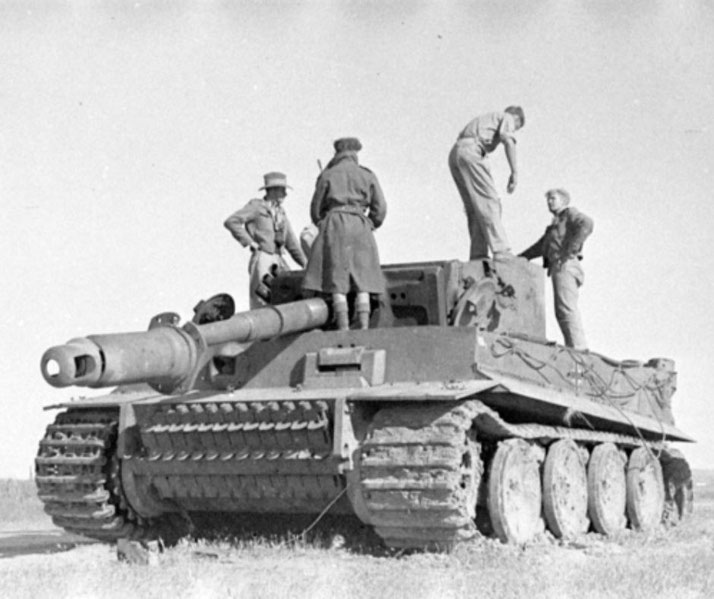'Panzer Divisions' in WWII: Hitler's steel behemoths on the battlefield

At the forefront of Nazi Germany's military success in the early years of World War Two were the famous Panzer Divisions.
They were the heart of the blitzkrieg assault that saw the rapid defeat of both Poland and France between 1939 and 1940.
However, behind the facade of the 'unbeatable' Panzer tanks lay some crippling problems.
So, what initially made the Panzer division so effective on the battlefield?
And why were they not enough to prevent the final defeat of the Nazi regime?
What was a Panzer Division?
The term "Panzer" is derived from the German word "Panzerkampfwagen," which translates to "armored fighting vehicle."
In essence, a Panzer division was a combined arms formation, predominantly made up of tanks (Panzer tanks), but also including motorized infantry, artillery, and other support units.
These divisions were designed for rapid advances, exploiting breakthroughs, and encircling enemy forces.
The idea of a Panzer division emerged from Germany's experiences in World War I.
There, the static nature of trench warfare and the devastating power of machine guns and artillery made rapid advances nearly impossible.
However, after the war, German military thinkers sought ways to restore mobility and surprise to the battlefield.
In the interwar years, Germany was restricted by the Treaty of Versailles from having tanks.
However, clandestine development and collaboration with the Soviet Union allowed German officers to experiment with armored warfare concepts.
By the time Adolf Hitler came to power and openly defied the treaty, Germany had a foundational understanding of how to use tanks en masse.

How were Panzer Divisions structured?
A typical Panzer division in the early stages of WWII consisted of:
- Panzer Brigade: Comprising two Panzer regiments.
- Motorized Infantry Brigade: Two motorized infantry regiments equipped with trucks for rapid movement.
- Artillery Regiment: Mostly self-propelled artillery.
- Reconnaissance Battalion: Equipped with light armored cars and motorcycles.
- Anti-Tank Battalion: Equipped with anti-tank guns and, later in the war, Panzerjäger (tank hunter) vehicles.
- Engineer Battalion: Motorized combat engineers.
- Signal Battalion: Responsible for communications.
- Supply and Maintenance Units: Ensuring the division was well-supplied and functional.
How Panzer Divisions operated
Combined Arms
The Panzer division wasn't just about tanks. It integrated tanks, motorized infantry, artillery, and other support units to function as a cohesive whole. This allowed the division to handle a variety of threats and objectives without waiting for reinforcements.
Deep Penetration
Instead of just engaging enemy frontline units, Panzer divisions aimed to penetrate deep into enemy territory. This would disrupt supply lines, command structures, and rear-guard units, causing chaos and disarray.
Encirclement and Destruction
One of the primary tactics of the Panzer division was to bypass strongpoints and encircle them, cutting off their supplies and reinforcements. These encircled units could then be reduced at leisure or forced to surrender.
Speed and Initiative
Panzer divisions emphasized rapid movement and decision-making. This often allowed them to seize the initiative, forcing the enemy to react to their moves rather than the other way around.
Key battles involving Panzer Divisions
The Invasion of Poland (1939)
The Panzer divisions played a crucial role in the Blitzkrieg ("lightning war") tactics that led to the rapid defeat of Poland. They exploited breaches in the Polish lines, encircled large Polish formations, and captured key objectives.
The Battle of France (1940)
Panzer divisions, bypassing the heavily fortified Maginot Line, raced through the Ardennes Forest, a move that the Allies believed was impossible for large mechanized forces. This led to the encirclement and eventual surrender of a significant portion of the British and French armies.
Operation Barbarossa (1941)
The invasion of the Soviet Union saw the largest deployment of Panzer divisions. They were instrumental in the capture of vast territories, but the harsh Russian winter and resilient Soviet resistance eventually halted their advance.
The Battle of Kursk (1943)
One of the largest tank battles in history, Kursk saw the German Panzer divisions pitted against the Soviet armored formations. Despite initial successes, the Germans were repelled, marking a turning point on the Eastern Front.
Normandy and the Battle of the Bulge (1944)
In the West, Panzer divisions were critical in countering the Allied invasion of Normandy. Later in the year, they spearheaded the Ardennes Offensive (Battle of the Bulge) in a last-ditch effort to split the Allied forces. Though initially successful, they were eventually pushed back.
How the Panzer Divisions evolved during WWII
As the war progressed, the composition and tactics of Panzer divisions evolved:
Early in the war, Panzer divisions had a mix of light, medium, and few heavy tanks.
Then, the emphasis shifted towards more powerful medium and heavy tanks, like the Panzer IV, Panther, and Tiger.
With the increasing threat from enemy aircraft and tanks, Panzer divisions incorporated more anti-aircraft and anti-tank units.
This allowed them to better defend themselves from these threats.
As the war dragged on, especially on the Eastern Front, Panzer divisions often faced logistical challenges.
The vast distances, poor infrastructure, and stretched supply lines made it difficult to maintain the division's operational tempo.
What do you need help with?
Download ready-to-use digital learning resources
Copyright © History Skills 2014-2025.
Contact via email
With the exception of links to external sites, some historical sources and extracts from specific publications, all content on this website is copyrighted by History Skills. This content may not be copied, republished or redistributed without written permission from the website creator. Please use the Contact page to obtain relevant permission.





